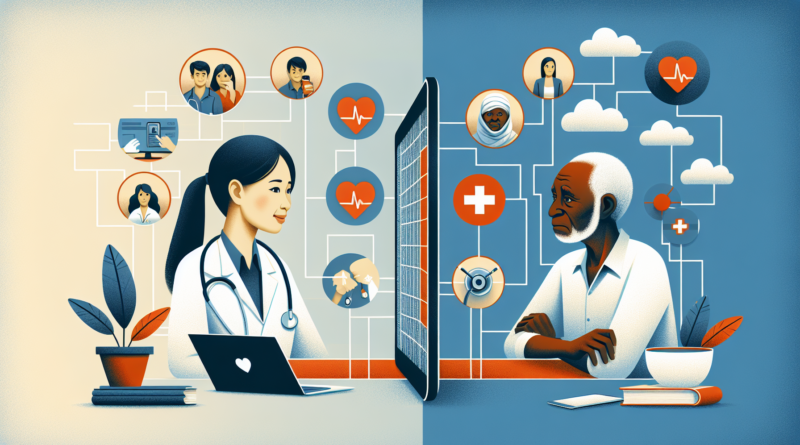Improving Access to Healthcare Services
Telemedicine refers to the use of digital technology to deliver healthcare services remotely. It allows patients to consult with healthcare providers through video calls, phone calls, or messaging apps. This approach has gained significant traction, especially in areas with limited access to healthcare facilities. By leveraging telemedicine, patients can receive timely medical advice without the need to travel long distances.
Benefits of Telemedicine
Telemedicine offers numerous benefits that enhance healthcare accessibility and efficiency. One of the primary advantages is the **
convenience ** it provides to patients. Individuals can schedule appointments at their convenience, reducing the need to take time off work or arrange childcare. Moreover, telemedicine can significantly **
reduce healthcare costs ** by eliminating travel expenses and minimizing the need for in-person visits.
Another critical benefit is the ** improved access to specialists **. Patients in rural or underserved areas can consult with specialists who may not be available locally. This expanded access can lead to better health outcomes, as patients receive timely and specialized care. Additionally, telemedicine can enhance ** continuity of care ** by facilitating regular follow-ups and monitoring, which is crucial for managing chronic conditions.
Challenges of Telemedicine
Despite its benefits, telemedicine also presents several challenges. One significant issue is the **
digital divide **. Not all patients have access to the necessary technology or reliable internet connections to participate in telemedicine consultations. This disparity can exacerbate existing healthcare inequalities, particularly for low-income or rural populations.
Privacy and security concerns also pose challenges for telemedicine. Ensuring that patient data is protected during digital consultations is crucial to maintaining trust in telehealth services. Healthcare providers must adhere to strict data protection regulations to safeguard patient information.
Another challenge is the ** lack of physical examination **. Some medical conditions require a hands-on approach for accurate diagnosis and treatment. While telemedicine can handle many consultations, it may not be suitable for all medical scenarios, necessitating a hybrid approach that combines virtual and in-person care.
Telemedicine: A Balanced Approach
Telemedicine is transforming healthcare by improving access and convenience. However, it is essential to address challenges such as the digital divide and privacy concerns to ensure equitable and secure healthcare delivery. By adopting a balanced approach that integrates telemedicine with traditional care, healthcare systems can provide comprehensive and effective services to all patients.
The future of telemedicine looks promising, with advancements in technology paving the way for more sophisticated and accessible healthcare solutions. Artificial intelligence (AI) and machine learning are expected to play a significant role in enhancing telemedicine services. AI-powered diagnostic tools can assist healthcare providers in making more accurate assessments during virtual consultations.
Moreover, the integration of wearable devices and remote monitoring tools can further improve patient care. These technologies enable continuous health monitoring, allowing healthcare providers to track vital signs and detect potential health issues early. This proactive approach can lead to better health outcomes and reduce the burden on healthcare systems.
Telemedicine and Policy
For telemedicine to reach its full potential, supportive policies and regulations are necessary. Governments and healthcare organizations must work together to establish clear guidelines that promote the safe and effective use of telemedicine. This includes addressing reimbursement policies to ensure healthcare providers are fairly compensated for virtual consultations.
Additionally, efforts should be made to bridge the digital divide by investing in infrastructure and providing resources to underserved communities. By ensuring that all patients have access to the necessary technology, telemedicine can become a more inclusive and equitable healthcare solution.
Embracing Telemedicine
Telemedicine has the potential to revolutionize healthcare delivery by making it more accessible and efficient. However, to fully realize its benefits, it is crucial to address challenges such as the digital divide and privacy concerns. By embracing telemedicine and integrating it with traditional care, healthcare systems can provide comprehensive and effective services to all patients.
Telemedicine is a powerful tool that can improve access to healthcare services, especially for those in remote or underserved areas. While it offers numerous benefits, it also presents challenges that must be addressed to ensure equitable and secure healthcare delivery. By adopting a balanced approach that integrates telemedicine with traditional care, healthcare systems can provide comprehensive and effective services to all patients. As technology continues to advance, telemedicine will likely play an increasingly important role in the future of healthcare.


